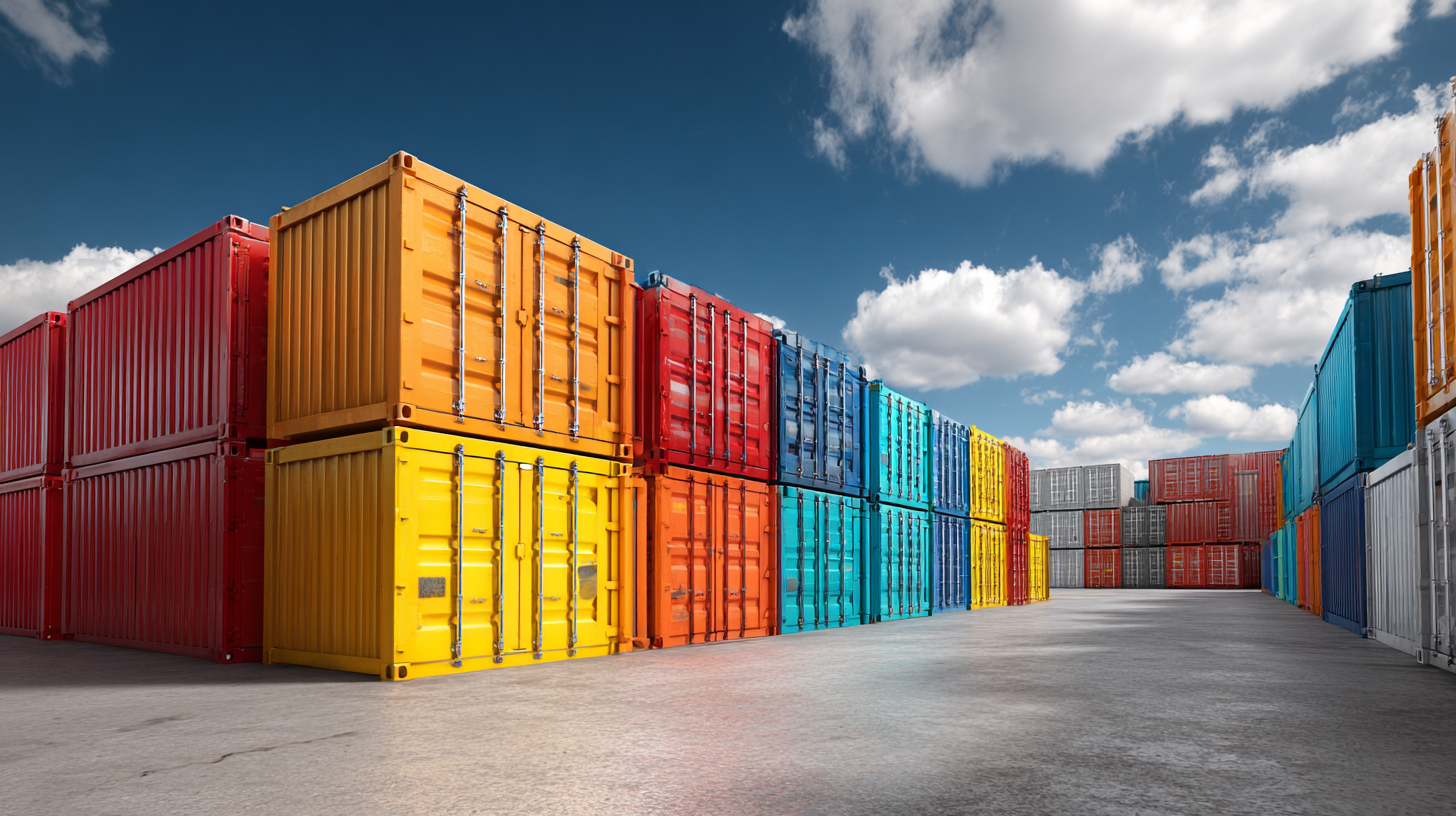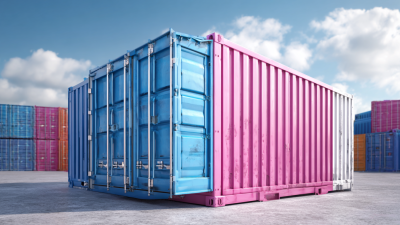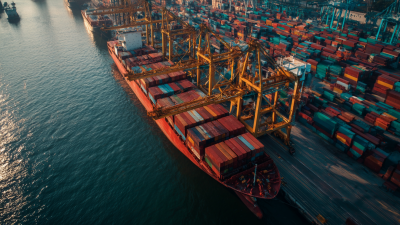News & Blogs
The Ultimate Guide to Efficient Storage for Shipping Containers and Optimization Tips
In today's fast-paced logistics and shipping industry, optimizing storage for shipping containers has become a pivotal aspect of operational efficiency. As businesses strive to maximize their space and streamline their supply chains, effective storage solutions not only reduce costs but also enhance productivity. The challenge lies in understanding how to best arrange and utilize storage for shipping containers, whether on-site at warehouses or within shipping yards. This guide aims to provide invaluable insights and practical tips that will empower companies to tackle the complexities of container storage, ensuring that every inch of space is utilized effectively.

From innovative shelving systems to strategic layouts, we will explore various methods to optimize storage for shipping containers, enabling businesses to meet growing demands while maintaining an organized and efficient workflow.
Understanding Different Types of Shipping Containers and Their Capacities
When it comes to understanding the different types of shipping containers and their capacities, it’s essential to categorize them based on their volume. Containers can be divided mainly into those with a capacity of less than 20,000 liters, those that hold exactly 20,000 liters, and larger containers that fall within the ranges of 35,000 liters, and those exceeding 35,000 liters. Each type serves distinct purposes in shipping and storage, with multi-compartment tanks, lined tanks, and standard storage tanks being the most common variations.
For example, multi-compartment tanks are beneficial for transporting various liquids without cross-contamination, making them ideal for industries that require the shipment of different products simultaneously. On the other hand, lined tanks are specifically designed to handle corrosive materials, ensuring that the contents remain secure during transit. As shipping requirements continue to evolve, understanding the specific uses and capacities of containers enables businesses to optimize their logistics and improve overall efficiency in the supply chain.
The Ultimate Guide to Efficient Storage for Shipping Containers and Optimization Tips
| Container Type | Dimensions (L x W x H) | Volume (CBM) | Maximum Payload (KG) | Common Uses |
|---|---|---|---|---|
| Standard Container | 20' x 8' x 8.5' | 33.2 | 22,500 | General cargo |
| High Cube Container | 40' x 8' x 9.5' | 76.4 | 30,480 | High volume goods |
| Reefer Container | 40' x 8' x 9.5' | 76.4 | 30,480 | Perishable goods |
| Flat Rack Container | 40' x 8' x 8.5' | 30.5 | 40,000 | Heavy and oversized cargo |
| Open Top Container | 40' x 8' x 8.5' | 30.5 | 30,480 | Bulk cargo |
Innovative Storage Solutions to Maximize Container Space Utilization
When it comes to maximizing space utilization in shipping containers, innovative storage solutions are essential. Utilizing vertical space is one of the most effective strategies. By installing shelving units and racks, you can stack containers and items efficiently, allowing for more inventory to be stored without compromising accessibility. Additionally, modular storage systems can be customized to fit the specific dimensions of the container, ensuring no space is wasted.

Another effective method is to implement a systematic organization technique. This includes categorizing items by size, weight, and frequency of use, which not only makes retrieval easier but also helps in packing the container more efficiently. Using clear labeling and bins can aid in maintaining order and ensuring that every item has a designated place. Lastly, leveraging tools like pallet jacks or forklifts can facilitate easier movement of goods, further optimizing the workflow within the storage container. By integrating these innovative solutions, businesses can significantly enhance their container space utilization and streamline their shipping and storage processes.
Cost-Effective Shipping Container Management: Best Practices and Data Insights
Effective management of shipping containers is crucial for businesses seeking to optimize their logistics and reduce costs. According to a report by the Global Container Terminal Operators (GCTO), efficient container management can reduce operational costs by up to 25%. Implementing best practices, such as regular inventory audits and utilizing advanced tracking technologies, significantly improves asset visibility and minimizes loss.
Data insights suggest that over 40% of shipping companies still rely on outdated manual processes, leading to inefficiencies and increased errors. By adopting automated systems and data analytics, companies can enhance their decision-making process, ensuring that container usage aligns with current demand. This shift not only maximizes storage capacity but also contributes to a greener supply chain by reducing emissions associated with unnecessary transport and storage activities.
According to the World Economic Forum, optimizing container utilization can decrease carbon footprints by approximately 30%, underscoring the importance of cost-effective and environmentally friendly shipping container management practices.
Calculating Optimal Container Load and Weight Distribution for Safety
When it comes to loading shipping containers, calculating optimal load and weight distribution is crucial for safety and efficiency. An unevenly distributed load can lead to container tipping, shifting, or even structural failures during transit. The first step in achieving optimal distribution is to assess the weight capacity of the container, which is typically detailed in the manufacturer's specifications. Understanding the gross weight limit ensures that you do not exceed the maximum safe load, thereby mitigating risks during shipping.
Once you have established the weight limits, focus on the positioning of items within the container. Heavier items should be placed on the bottom and towards the center of the container to lower the center of gravity and improve stability. Additionally, evenly spreading the weight across the width and length of the container helps minimize the chances of sway and motion during transport. Using dunnage or packing materials can secure the load and prevent shifting. By following these guidelines, shippers can ensure that their cargo arrives safely and in optimal condition.
Leveraging Technology for Enhanced Tracking and Inventory Management in Shipping
In an increasingly digital world, leveraging technology for enhanced tracking and inventory management in shipping has become paramount. The global supply chain analytics market is set to grow significantly, with projections showing an increase from $11.08 billion in 2025 to $32.71 billion by 2032. This shift underscores the need for sophisticated software solutions that not only streamline operations but also provide real-time visibility into shipment statuses and inventory levels. Companies are now investing in advanced logistics software designed to automate various supply chain processes, facilitating better decision-making and operational efficiency.

The expansion of e-commerce has further accelerated this transformation, leading to a spike in demand for robust logistics solutions. As online shopping continues to rise, so does the necessity for effective inventory management. Technologies such as AI-driven demand forecasting and blockchain for secure transaction tracking are paving the way for optimized supply chains. With the healthcare logistics market also experiencing growth, driven by the need for accurate and timely delivery of medical supplies, investing in reliable shipping container management systems will become essential for companies seeking to enhance their operational capabilities and customer service.
Related Posts
-

Maximize Your Space with 20 Foot Storage Containers for Effective Organization Solutions
-

The Science Behind Refrigerated Containers and Their Role in Modern Logistics
-

Maximizing Space with the Best 20 Storage Container Solutions for Every Home
-

Mastering the Process: A Comprehensive Guide to Shipping a Container Efficiently
 عربي
عربي عربي
عربي